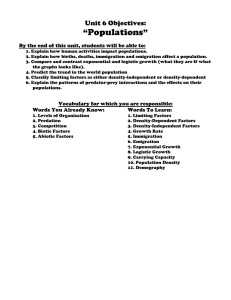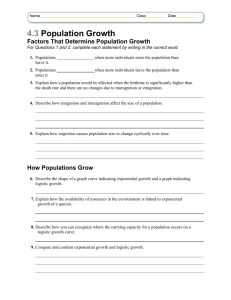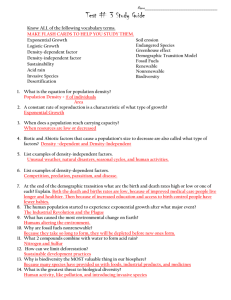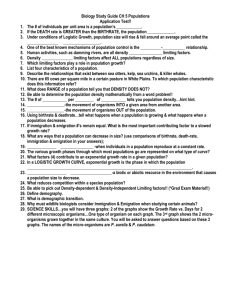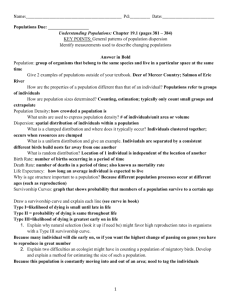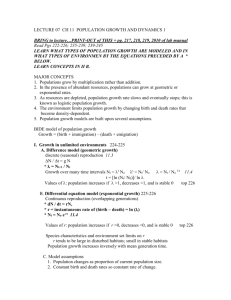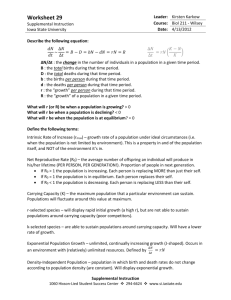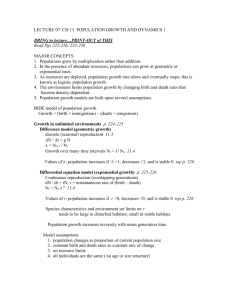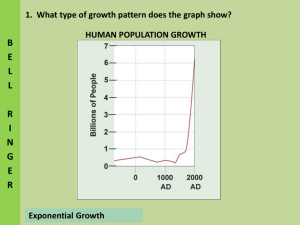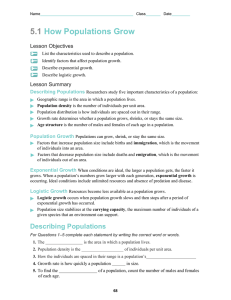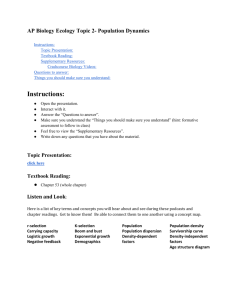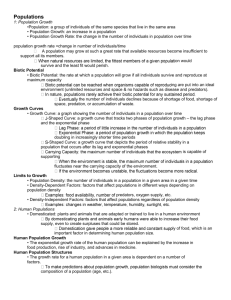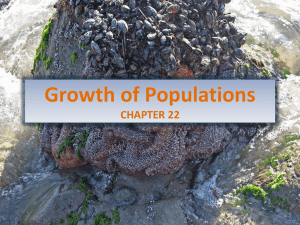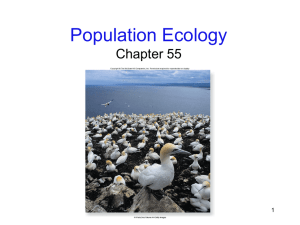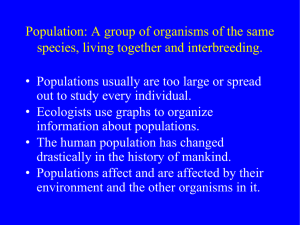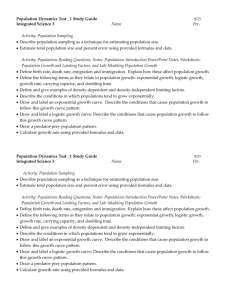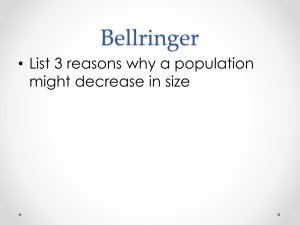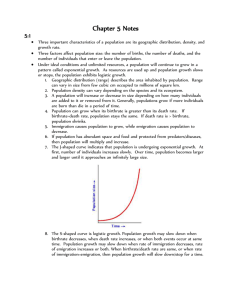Unit C – Ecology Week 4 How Populations Grow List three
advertisement
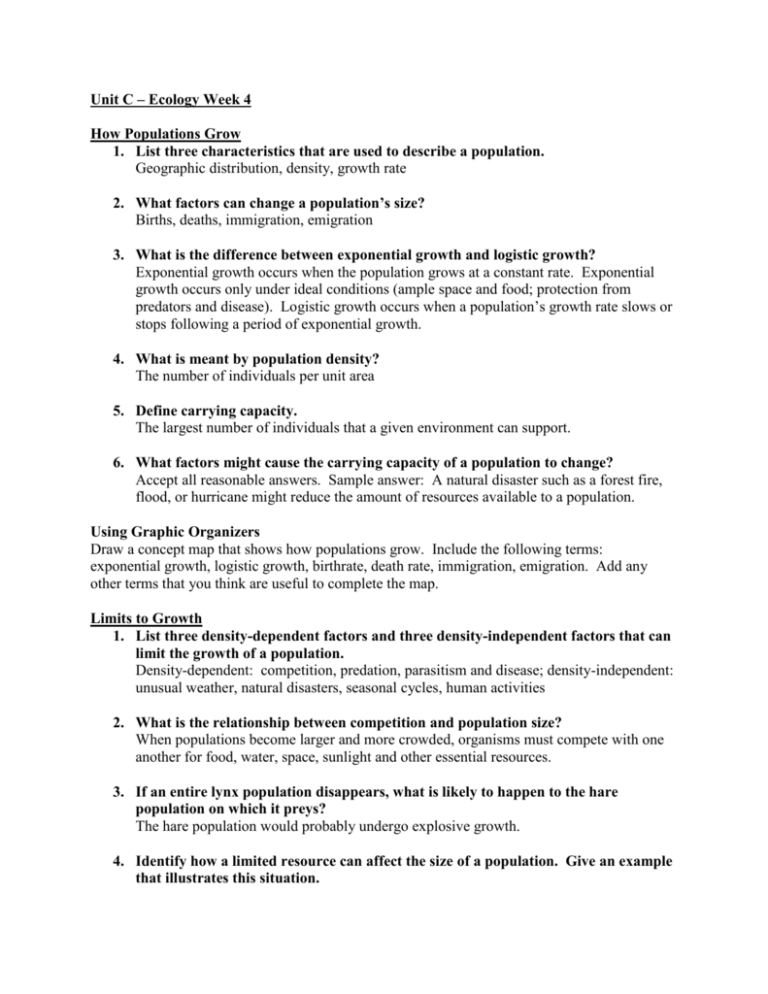
Unit C – Ecology Week 4 How Populations Grow 1. List three characteristics that are used to describe a population. Geographic distribution, density, growth rate 2. What factors can change a population’s size? Births, deaths, immigration, emigration 3. What is the difference between exponential growth and logistic growth? Exponential growth occurs when the population grows at a constant rate. Exponential growth occurs only under ideal conditions (ample space and food; protection from predators and disease). Logistic growth occurs when a population’s growth rate slows or stops following a period of exponential growth. 4. What is meant by population density? The number of individuals per unit area 5. Define carrying capacity. The largest number of individuals that a given environment can support. 6. What factors might cause the carrying capacity of a population to change? Accept all reasonable answers. Sample answer: A natural disaster such as a forest fire, flood, or hurricane might reduce the amount of resources available to a population. Using Graphic Organizers Draw a concept map that shows how populations grow. Include the following terms: exponential growth, logistic growth, birthrate, death rate, immigration, emigration. Add any other terms that you think are useful to complete the map. Limits to Growth 1. List three density-dependent factors and three density-independent factors that can limit the growth of a population. Density-dependent: competition, predation, parasitism and disease; density-independent: unusual weather, natural disasters, seasonal cycles, human activities 2. What is the relationship between competition and population size? When populations become larger and more crowded, organisms must compete with one another for food, water, space, sunlight and other essential resources. 3. If an entire lynx population disappears, what is likely to happen to the hare population on which it preys? The hare population would probably undergo explosive growth. 4. Identify how a limited resource can affect the size of a population. Give an example that illustrates this situation. Accept all reasonable responses. Students might mention any of the density-independent factors as limiting a resource. A limited resource limits the size of a population. 5. Give an example of a density-independent limiting factor that has affected a human population. Describe how this factor changed the human population. Accept all reasonable responses. Sample answer: A prolonged drought, with its associated crop loss, could cause deaths, financial hardship and emigration to other countries. Interdependence in Nature Study the factors that limit population growth as shown in Figure 5-5. Classify each factor as either biotic or abiotic. Refer to the information on biotic and abiotic factors in section 4-2. Human Population Growth 1. Describe the general trend of human population growth that has occurred over time. For tens of thousands of years, the human population grew very slowly. Then, about 500 years ago, the population started to grow exponentially and increased dramatically. 2. What factors explain why populations in different countries grow at different rates? Birthrates, death rates and the age structure of a population 3. What is demography? The scientific study of human populations 4. Describe the demographic transition and explain how it might affect a country’s population growth rate. When the demographic transition begins, the birthrate and the death rate are high. Then, the death rate drops while the birthrate remains, high. Finally, the birthrate also drops. After the demographic transition, a population’s growth rate would be very low, and growth could even stop. 5. Why do you think age-structure diagrams can help predict future population trends? Age-structure diagrams include data on younger individuals in age groups that will contribute to population growth as members of those groups mature. Explanatory Writing Write a paragraph on the trends in the growth of world population from 1950 to 2050. Be sure to distinguish between population growth and population growth rate. Hint: Refer to Figure 5-14 to help with your explanation.
